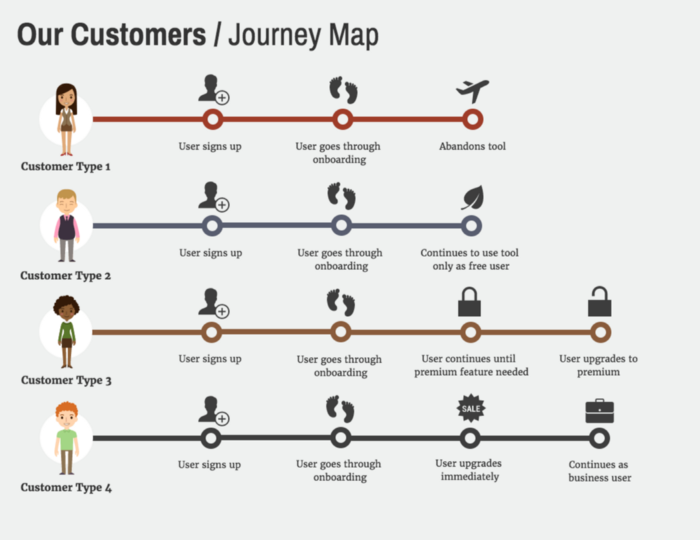You're probably familiar with the concept of personas, a fictional representation of a real market segment. It's a term that crops up a lot when we discuss user experience here at Future of SaaS.
In this article we’ll be taking a deeper look at user personas and how they can help enhance user experience, including actionable tips on:
• How to create a user persona
• How they help the design process
• What else they can be used for
But first, let’s go back to basics.
What is a user persona?
A user persona is a fictional representation of a person who uses your product backed up by real research. This research is usually conducted via interviews or surveys, and updated regularly. A user persona typically represents the goals, characteristics and needs of a wider group of users who utilize your product.

What's included in a user persona?
A user persona typically includes:
- A photo of your persona
- Their name
- A description of them
- Their goals
- Their budget
- Their pain points
How to create a user persona
The first step to creating a user persona is collecting information about your users. You’ll need to know their motivations, goals, what they expect from the product and pain points.
You can collect quantitative data through surveys, checkboxes or multiple-choice questions, or utilize qualitative data using interviews or focus groups. It’s worth nothing we’d never recommend relying solely on quantitative methods - while they can be used to top up your qualitative research (aka getting our there and talking to real people), they’re by no means a substitute.
Not too sure what the difference is? Check out this handy guide.

If you're fairly new to conducting surveys or interviews for research purposes it can be quite a daunting task. Unsure of what to ask? If you're already a Future of SaaS member, we have a tried and tested user persona template included in our collection of templates and frameworks.
What do user personas look like?
Your completed user persona should look something like this...

See how it clearly outlines Jill’s goals, frustrations and motivations? There's also a brief bio that outlines what Jill does, and her expectations for the product as well as how well versed she is in certain technologies.
How do they help the design process?
If you asked the question, ‘who are we designing for?’ Personas would be your answer.
They're the people you specifically have in mind when you're designing your product.
They’re a very real reminder that you're designing with actual people in mind, and help to keep those expectations, pain points and behaviors at the forefront of everything you do.
What else can they be used for?
User personas aren’t just a powerful tool for keeping your design lazer-focused. They're also really useful for helping the wider company grow. The data you uncover during the research phase is invaluable for discovering the different ways users search for, utilize and buy your product. They can be used to great effect in the messaging and positioning stages and help marketing craft valuable, targeted copy.
As you continue to research and refresh your user persona, they're also a great indicator of what’s working and what isn’t when it comes to certain aspects of the product.
Building empathy maps
An empathy map is a visualization of a user's journey through your product. It answers four key questions using the data gathered from your user personas, what the user thinks, feels, says and does.
Put simply, it’s a visual tool used to create a shared understanding of your user’s needs and behaviors and help aid decision making.

User journeys
Once you’ve defined your user personas and mapped out their emotional journeys you can then use that information to map out their current user experience. The map should clearly outline their highlights and pain points. Having an honest visualization of your users' journey through your product helps you to identify areas for improvement, determine how big of an impact your user’s pain point has on their overall experience, and helps you decide which areas need your immediate attention the most.

And there we have it!
For a deeper dive into all things user persona related check out our membership plans. Access a range of resources, templates and frameworks to elevate your SaaS career.




